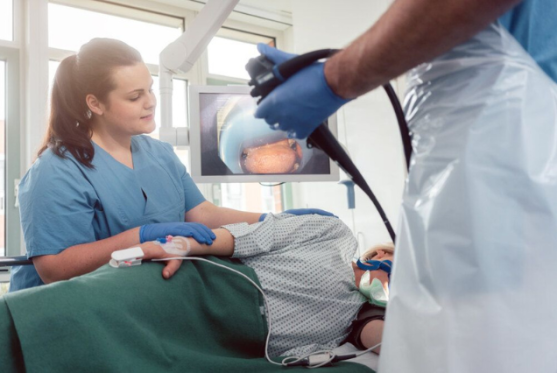
Guide to Understanding Digestive Health
- 3 Mar, 2025
- 35

What is endoscopy?
Endoscopy is a minimally invasive procedure that examines the inside of the digestive tract using an endoscope, a long, thin, flexible tube with a tiny camera attached at the end.
Gastroscopy (known as upper gastrointestinal endoscopy or panendoscopy) is a procedure to inspect the oesophagus (food pipe), stomach and duodenum (first part of the small bowel) using a thin, flexible tube with a camera.
Gastroscopy
What are the indications for a gastroscopy?
Gastroscopy is used to investigate symptoms such as: Dyspepsia, Nausea and vomiting, Abdominal pain, Bleeding (Anaemia and iron deficiency low ferritin), Bloating, Heartburn, Swallowing difficulties, Weight loss.
These symptoms may be caused by a wide range of disorders, including:
How do I prepare for a gastroscopy?
You will need to stop eating or drinking for at least 6 hours prior to the test. If your test booking 1pm or later, you may have light breakfast or drink prior to 7.00 am. The hospital will contact you one working day prior to your procedure to advise on fasting time.
Medications
You may have your normal morning medications with a small sip of water. You will be given instructions about when to stop your blood-thinning and diabetes medications.
Please notify your doctor if you are pregnant, diabetic, take warfarin or other blood thinning medication, suffer from disease affecting the heart, or have a pacemaker.
How is a gastroscopy performed?
Gastroscopy is performed under a light anaesthetic (deep sedation) given by our anaesthetist so that you will be asleep. The back of your throat may be sprayed with a local anaesthetic to make it numb, and a small mouthguard is placed between your teeth to prevent biting the endoscope. A sedative medication is given through a vein in your forearm. Once sedated and lying in a comfortable position on your left side, the endoscope is passed through the mouth, oesophagus, stomach, and duodenum. The lining of these areas is examined for abnormalities, and biopsies (samples of tissue) may be taken. The procedure takes approximately 15 to 20 minutes. You will not be in any pain or discomfort and will be able to breathe normally throughout.
What happens after the gastroscopy?
Following the gastroscopy, you will remain in the hospital recovery area until the effect of the medication wears off (sometimes up to 2-3 hours). You may experience slight discomfort or bloating due to air introduced into the stomach during the test and possibly a slight sore throat.
Because the sedation given may interfere with your judgement or ability to concentrate, you should not drive a motor vehicle, travel on public transport alone, operate dangerous machinery or sign important documents for the remainder of the day. It is necessary to arrange for a relative or friend to accompany you.
Our specialist will inform you of your test results on the day of the procedure. A follow-up appointment may be scheduled to discuss the test results more fully. The results of any biopsies typically take one week.
What are the risks of gastroscopy?
Gastroscopy is a very safe procedure. Despite the highest standard of practice, complications can occur but rare. The following possible complications are listed to inform, not to alarm. Other complications may exist that are not listed.
Serious problems such as anaesthetic complications, bleeding or gut perforation (tear) occur in approximately 1:10,000 cases.
If you wish to have a more detailed discussion about potential risks, please contact your specialist prior to the procedure.
If you develop severe abdominal or chest pain, fever, vomit blood or pass black bowel motions, you should contact your doctor immediately or go to the nearest hospital’s Emergency Department.
Our team perform gastroscopy and colonoscopy at Brisbane Waters Private Hospital and Gosford Specialist Day Hospital on the Central Coast.